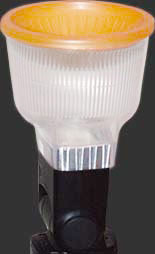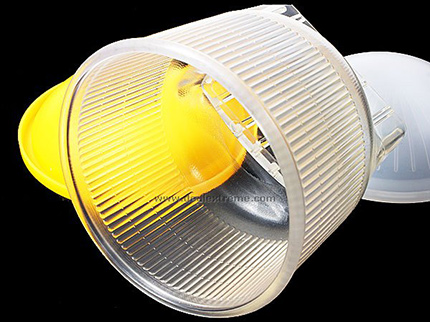 There is, rightly so, a great deal of consternation as it pertains to batteries that will be aboard aircraft, effective yesterday. I'd hate to be traveling on assignment with gear in the coming weeks (thankfully, I am not, as of now, scheduled to travel with cameras in the coming weeks), while the TSA gets their act together and learns how to handle professional photographers and videographers under this DOT/FAA change.
There is, rightly so, a great deal of consternation as it pertains to batteries that will be aboard aircraft, effective yesterday. I'd hate to be traveling on assignment with gear in the coming weeks (thankfully, I am not, as of now, scheduled to travel with cameras in the coming weeks), while the TSA gets their act together and learns how to handle professional photographers and videographers under this DOT/FAA change.
In the interim, what can we do, and how, exactly, does this affect us?
Let's look at specific batteries, do the math, and offer a few solutions.
(Continued after the Jump)
Geek Alert: If you're in a hurry, or confuse easily, skip to the bottom for the conclusion...
First things first - the AP is reporting "...air travelers will no longer be able to pack loose lithium batteries in checked luggage...Passengers can still check baggage with lithium batteries if they are installed in electronic devices, such as cameras, cell phones and laptop computers...."The ban affects shipments of non-rechargeable lithium batteries...", but the AP, according to the official DOT website, there is no distinguishing between rechargeable and non-rechargable.
It' all about total Lithium-ion battery content. The full rules were published in the Federal Register back in August, probably when most of us were on vacation and not doing our daily read of the Register. It can be read in PDF form here. (this is worth printing and carrying with you, highlighted where it best serves you, as a part of your travel documents. For those of you not wanting to delve into the nuances of lawmaking, which, like sausage making, is best left unviewed, you can skip to page 22, and highlight the Part 175 section.)
A few worthwhile excerpts:~ For example, several thousand small lithium batteries consolidated together present a higher potential risk than a shipment of a single lithium battery
Thus, why each passenger can carry a few, because they are expecting that several will carry a small amount. Woe-be-the-press plane with hundreds of battery packs in the hold, or carryon! Political campaigns, are you listening?~ The amendments adopted here include tightened testing standards to ensure that batteries that pose the greatest risk in transportation are designed to withstand normal conditions of transportation and packaged to minimize risks of mishandling or damage in transit.
Thus, you can expect,in short order, that manufacturers will change the labeling on their batteries to say "air worthy", or some other designator. This is a boon for manufacturers, who will not be able to sell new batteries to all those currently with batteries, because the new batteries will be designated "air worthy."
The FINAL RULE, as outlined in the Federal Register, sets forth several designations:| | Small
(no more than) | Medium
(between) | Large
(more than) |
| Cells: |
1g Li.
1.5g ELC* |
1g and 5g Li.
1.5g and 5g ELC. |
5g Li.
5g ELC. |
| Batteries: |
2g Li.
8g ELC |
2g and 25g Li.
8g and 25g ELC. |
&25g Li.
25g ELC. |
ELC = Equivilent Lithium Content."For purposes of this rulemaking, we use the term ‘‘primary lithium battery’’ to refer to a non-rechargeable battery and the term ‘‘secondary lithium battery’’ to refer to a rechargeable battery."
This is a very important designator, because there are different allowances (as outlined below) for these two types."In weighing the costs and benefits of regulation, we consider the mode of transportation and impose the strictest standards in air transportation, particularly passenger service."
Note, they say "passenger service". More on this later.
Almost all of the incidents that occurred, and that the NTSB investigated (as outlined in the Register), were of major battery shipments, although there were a few carry-on issues they noted."Inevitably, further technological advances, new product development, and market shifts will drive continued change in risks and benefits. We are committed to addressing those changes in a manner that safeguards our transportation systems and the traveling public, while promoting positive technological advances and minimizing regulatory costs and burdens for
consumers and industry, including small businesses."
Thanks for thinking of us.
HM–224E Rulemaking. Based in part on the June 2004 FAA technical report...The IFR prohibits the ...transportation ...of primary lithium batteries and cells, and equipment containing or packed with large primary lithium batteries (i.e., batteries containing greater than 25 grams of lithium) as cargo aboard passenger-carrying aircraft. In addition, equipment packed with or containing small or medium-size primary lithium batteries (i.e., batteries containing 25 grams or less of lithium) must be transported in accordance with Special Provisions A101 or A102. Under these Special Provisions, a primary lithium battery or cell packed with or contained in equipment may not exceed a net
weight of 5 kg (11 pounds). Finally, the outside of each package that contains a primary lithium battery or cell
forbidden for transport aboard passenger carrying aircraft must be marked ‘‘PRIMARY LITHIUM BATTERIES—
FORBIDDEN FOR TRANSPORT ABOARD PASSENGER AIRCRAFT.’’
Are any of your batteries currently marked as such? Didn't think so."Unless contained in equipment, each package containing more than 24 lithium cells or 12 lithium batteries must also be: (1) Marked to indicate it contains lithium batteries and special procedures must be followed in the event that the package is damaged; (2) Accompanied by a document indicating the package contains lithium batteries and special procedures must be followed in the event that the package is damaged; (3) No more than 30 kilograms gross weight; and (4) Capable of withstanding a 1.2 meter drop test in any orientation without shifting of the contents that would allow short circuiting, and without release of package contents."
Note here, the new law is does not use the word "installed", it says "contained in equipment", which lends credence to the idea that a battery could be "contained" in chargers for batteries, like Nikon's, that use a cradle."As amended in the IFR, lithium batteries contained in equipment and spares of all types (primary and secondary) are authorized in carry-on or checked baggage."
This looks promising."...spare lithium batteries may only be carried in carry-on luggage and that they must be individually protected against short circuits. Unprotected batteries are susceptible to short circuits when exposed to items typically carried by passengers and crew members, such as car keys and coins. We recommend that passengers protect spare batteries by placing them in protective cases or individual zip-top bags or placing non-conductive tape across exposed terminals."
They define:"Aggregate lithium content means the sum of the grams of lithium content or equivalent lithium content contained by the cells comprising a battery."
So, the aggregated amount is all of your batteries, combined together. Do the math with your batteries. The Register gives you the formula:
Equivalent lithium content means, for a lithium-ion cell, the product of the rated capacity, in ampere-hours, of a lithium-ion cell times 0.3, with the result expressed in grams. The equivalent lithium content of a battery equals the sum of the grams of equivalent lithium content contained in the component cells of the battery.
They go on to say:" The provisions of paragraph (a)(1) {preclusion from flying on passenger aircraft} do not apply to packages that contain 5 kg (11 pounds) net weight or less of primary lithium batteries or cells that are contained in or packed with equipment and the package contains no more than the number of lithium batteries or cells necessary to power the piece of equipment; "
We fall under the new, Part 175-Carriage By Aircraft, as amended, regulation, which reads:§175.10 Exceptions.
(a) ***
(17) Except as provided in §173.21 of this subchapter, consumer electronic and medical devices (watches, calculating machines, cameras, cellular phones, lap-top and notebook computers, camcorders, etc.) containing lithium cells or batteries and spare lithium batteries and cells for these devices, when carried by passengers or crew members for personal use. Each
spare battery must be individually protected so as to prevent short circuits (by placement in original retail packaging or by otherwise insulating terminals, e.g., by taping over exposed terminals or placing each battery in a separate plastic bag or protective pouch) and carried in carry-on baggage only. In addition, each installed or spare battery must not exceed the following: (i) For a lithium metal battery, a lithium content of not more than 2 grams per battery; or (ii) For a lithium-ion battery, an aggregate equivalent lithium content of not more than 8 grams per battery, except that up to two batteries with an
aggregate equivalent lithium content of more than 8 grams but not more than 25 grams may be carried.
So, here's my carry-on equipment:
Both my Canon and Nikon batteries are marked: Canon-2300mAh, Nikon-2500mAh. Since all batteries we use are listed in mAh, or milliamp hours, using the higher 2500mAh, that translates to 2.5 Ah. Thus:
2.5Ah x 0.3 = .75g.
So, when installed in a device, your camera's battery counts for .75g of your allotment.
My Apple 17" laptop is powered by a 5400mAh battery (although nowhere on the battery does it actually list the mAh). Thus:
5.4Ah x 3 = 1.62g.
So, when installed in my laptop, my battery counts for 1.62g of my allotment.Small lithium cells and batteries.
Lithium cells or batteries, including cells or batteries packed with or contained in equipment, are not subject to any other requirements of this subchapter if they meet all of the following:
b. For a lithium metal or lithium alloy cell, the lithium content is not more than 1.0 g. For a lithium-ion cell, the equivalent lithium content is not more than 1.5 g;
c. For a lithium metal or lithium alloy battery, the aggregate lithium content is not more than 2.0 g. For a lithium-ion battery, the aggregate equivalent lithium content is not more than 8 g;
Thus, since I travel with two laptop Lithium-ion batteries (not cells), each of them falling below the aggregate equivilent, they are ok.
Solutions:
1) One solution that has been bantied about is "install" the batteries in your charger! Well, my read of the EOS 1Ds Mark III and the Nikon D3 manuals all refer to "placing" the batteries in the charger, not "installing" them, so, I think this is going to be a tenuous argument to the TSA lackey at the security checkpoint. Further, it doesn't change the aggregated maximum Li-ion capacity you can take - installed or spare. However, the actual law says "contained in", which means it should be fine.
2) Label your batteries with something like a brother p-touch. We do that with our contact information and battery # (i.e. Battery 01, Battery 02, Battery 03, and so forth). Label it: "Li-ion content: 0.75g". Under 2g requirement.
3) Ship your batteries. This entire issue is about passenger aircraft.When transported aboard cargo-only aircraft, packages containing primary lithium batteries and cells transported in accordance with Special Provision A45 of the ICAO Technical Instructions must be marked ‘‘PRIMARY LITHIUM BATTERIES—FORBIDDEN FOR TRANSPORT ABOARD PASSENGER AIRCRAFT’’ or ‘‘LITHIUM METAL BATTERIES—FORBIDDEN
FOR TRANSPORT ABOARD PASSENGER AIRCRAFT.’’ This marking is not required on packages that contain 5 kg (11 pounds) net weight or less of primary lithium batteries or cells that are contained in or packed with equipment. "
Battery weights:- the Canon LP-E4, for the EOS Mark III line of cameras, and the Nikon EN-EL4a batteries both weigh in at .4 lbs. You could ship, in one package, over twenty of them, and be just fine.
CONCLUSION:
We fall under the new, Part 175-Carriage By Aircraft, as amended, regulation, which reads (I am putting this in this post twice, so you are sure to read it, if you skipped to the bottom):
§175.10 Exceptions.
(a) ***
(17) Except as provided in §173.21 of this subchapter, consumer electronic and medical devices (watches, calculating machines, cameras, cellular phones, lap-top and notebook computers, camcorders, etc.) containing lithium cells or batteries and spare lithium batteries and cells for these devices, when carried by passengers or crew members for personal use. Each
spare battery must be individually protected so as to prevent short circuits (by placement in original retail packaging or by otherwise insulating terminals, e.g., by taping over exposed terminals or placing each battery in a separate plastic bag or protective pouch) and carried in carry-on baggage only. In addition, each installed or spare battery must not exceed the following: (i) For a lithium metal battery, a lithium content of not more than 2 grams per battery; or (ii) For a lithium-ion battery, an aggregate equivalent lithium content of not more than 8 grams per battery, except that up to two batteries with an
aggregate equivalent lithium content of more than 8 grams but not more than 25 grams may be carried.
So I can travel with a battery installed in Camera #1 (0.75g), two extra batteries for that camera (2x 0.75g), and in Camera #2 (0.75g), two extra batteries for that camera (2x 0.75g); Laptop battery (1.62g), an extra laptop battery (1.62), for a sub-total of 4.5g Li-ion for the cameras, a laptop sub-total of 3.24, or a grand total of 7.74g. Well below my limits.
Thus, I expect that the effect on us will be minimal, especially when we put batteries in individual zip-locks, keep them in manufacturer packaging (like AA's) until use, leave them in equipment, and place tape over contacts, we should all be fine.
Note: If someone wants to provide a re-interpretation of the laws, and post it in comments, or send it to me via e-mail, I am happy to look over another interpretation, and amend/update my post, as applicable.
Please post your comments by clicking the link below. If you've got questions, please pose them in our Photo Business Forum Flickr Group Discussion Threads.
[More: Full Post and Comments]
![]() Below is a preview of the ImagingUSA Expo in Tampa Florida, a presenation of the Professional Photographers of America.
Below is a preview of the ImagingUSA Expo in Tampa Florida, a presenation of the Professional Photographers of America. Today, I was browsing for some equipment, in a store I don't normally shop, based in Hong Kong,
Today, I was browsing for some equipment, in a store I don't normally shop, based in Hong Kong,  The items appear identical, and are available in both clear and opaque versions.
The items appear identical, and are available in both clear and opaque versions.  Back in October, we launched
Back in October, we launched 